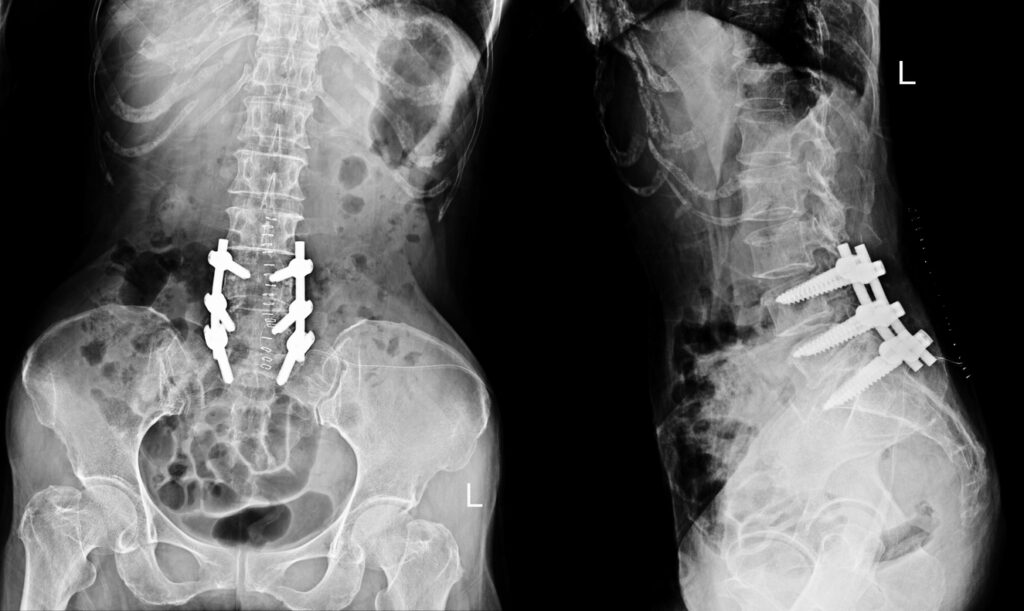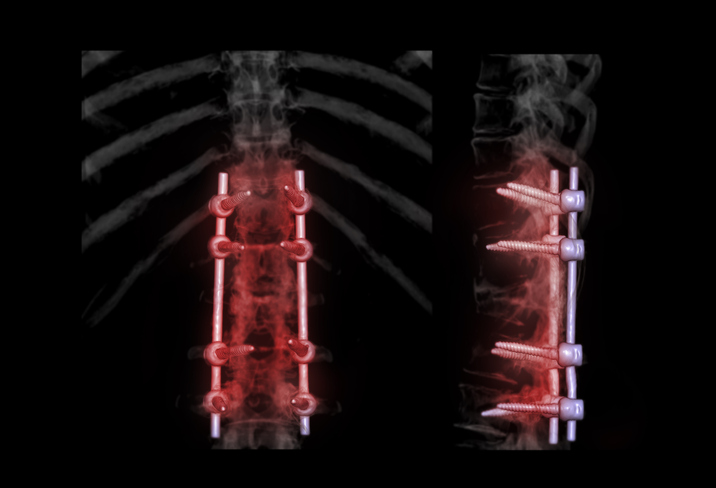POSTERIOR LUMBAR FUSION
A spinal fusion is sometimes required to improve quality of life.

What is a Fusion?
Posterior lumbar fusion, also known as arthrodesis, is a surgical procedure performed to join two or more of the lumbar vertebrae (the building blocks of the spine) into one solid bone.
This operation is designed to stop mechanical pain, the pain associated with the movement of the affected bones that results in inflammation of the discs and joints, by fusing the joint together to prevent the micromotion.
The fusion is done with screws and rods, but also sometimes by using an interbody graft (Titanium or plastic piece filled with the patient’s own bone) in the disc space to help promote a fusion.
PLIF – Posterior Lumbar Interbody Fusion
TLIF – Transforaminal Lumbar Interbody Fusion
The procedure is called a posterior fusion because the surgeon works from the posterior or the back of the spine.
The Surgical Procedure
During the procedure, performed under general anesthesia, the patient is usually face down on a special operating table.
An incision is made in the middle of the lower back to expose the lamina, which is the posterior border of the spinal canal. The lamina is removed in order to decompress the spinal canal and the nerve roots.
Screws are placed in the pedicles of the spine, the part of the spine that connects the lamina (posterior part of the spine) to the vertebral body (anterior aspect of the spine)
The right sided screws are connected by a rod and the left sided screws are connected by a rod, across the joint, to fuse the joint.
Main goal is to fuse and prevent motion. To aid in fusion, sometimes the disc (shock absorber between the building blocks of the spine) is removed and replaced with an interbody graft (PLIF or TLIF) filled with the patient’s own bone. Thus, the patient is fused anteriorly with the interbody graft and posteriorly with the screws and rods.

Transforaminal Lumbar Interbody Fusion
Posterior Lumbar Interbody Fusion (PLIF)
What Does a Fusion Treat?
Fusions treat a variety of spinal conditions affecting the lower back, including:
- Spondylolisthesis
- Spinal fractures
- Tumors
- Infections
- Scoliosis
- Degenerative disc disease
- Radicular pain (pain down the leg)
Recovery and Limitations
The patient is usually in the hospital for 1-2 nights recovering from surgery and trying to keep postoperative pain under control.
The patient has to avoid heavy lifting, bending, and twisting for 6 weeks.
Usually patient is able to return to work or activities with no restrictions around 3 months after surgery.
schedule an appointment
- Contact Us
Ready to learn more? Contact us today to get started.
Make an Appointment
New & Existing Patients: Request An Appointment
New and existing patients may request an appointment by filling out the form below. Someone from our team will be contacting you to schedule an appointment time.

